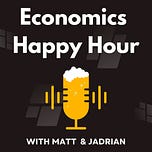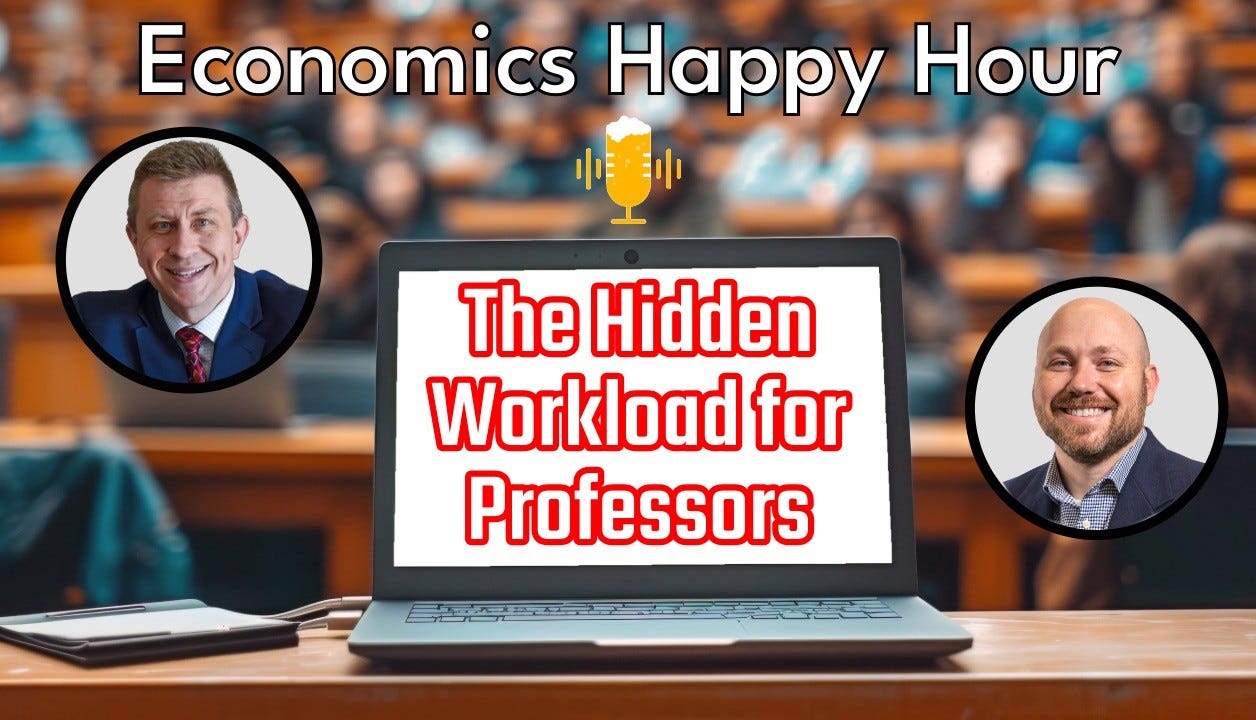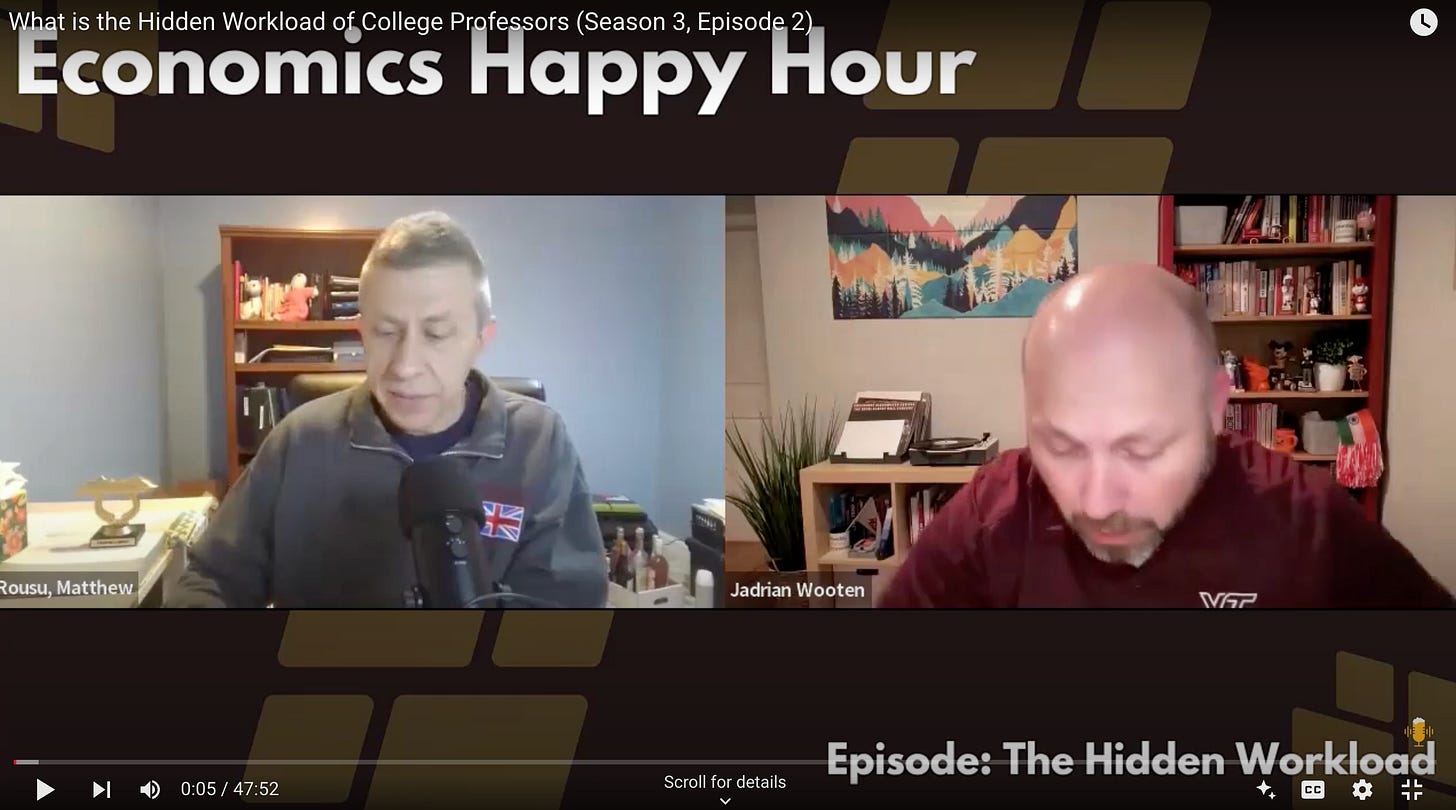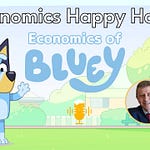Ever wonder what a professor's schedule really looks like? In this episode, Matt and Jadrian lift the hood on the academic calendar, from the chaotic first weeks of the semester to the ebb and flow of research, teaching, and service. Matt also shares his early experiences on sabbatical—how it compares to summer break, whether he misses teaching, and how he's spending his time. Plus, we dream up the ultimate sponsored professor title (Jersey Mike’s, call us!).
In this episode, we discuss:
Why the first two weeks are the busiest for professors.
How teaching, research, and service are balanced throughout the academic year.
The difference between a faculty schedule and an administrator's schedule
What a sabbatical really looks like—is it just a long vacation? (Spoiler: No.)
And a whole lot more!
Catch up on some old episodes:
You can also listen to us on Google Podcasts, TuneIn Radio, and Apple Podcasts. If one of these is your go-to podcast service, be sure to rate us and subscribe!
Watch this episode on YouTube:
Some show notes:
This episode didn’t start smoothly, as Jadrian spilled his beer right in the middle of Matt’s introduction. Perhaps that’s a metaphor for the start of the semester? We’re in the first few weeks of a new semester, so things are a little chaotic. Jadrian was drinking (and spilling) a Busted Knuckle Porter from Quaff On! Brewing Company, which was probably a gift from our friend, Tim. Matt is still in the middle of Damp January, so he went with a Run Wild IPA from Athletic Brewing. He does have a back-up beer from his most recent trip to Morgantown, WV.
So, what does a professor’s work schedule really look like? Contrary to popular belief, it’s not just teaching a few classes and taking summers off. In this episode, we break down the ebb and flow of an academic year, highlighting the busiest times, the quieter stretches, and the unique balance of teaching, research, and service. From prepping for new courses to dealing with an avalanche of student emails, the first few weeks of the semester can feel overwhelming. Professors don’t just show up and lecture—there’s a significant amount of behind-the-scenes work that keeps everything running smoothly.
For many faculty members, the job isn’t a steady 9-to-5. Workloads spike at the start of the semester when students are adding and dropping courses, figuring out their schedules, and (sometimes) realizing they need to buy the textbook. The middle of the semester might offer some breathing room, but then come grading-heavy periods and the rush to finish research projects before conference deadlines. Administrators like department chairs and deans experience different cycles, often seeing a surge in work before classes start and during registration periods, while faculty members feel the most pressure during midterms and finals.
Sabbaticals offer a rare opportunity to step back from teaching and focus entirely on research and writing. But do professors actually miss the classroom when they’re away from it? Matt shares his early thoughts on his sabbatical experience—how it compares to a typical semester, whether he finds himself missing student interactions, and how he’s using the time to explore new projects. The flexibility to dive deep into research without constant administrative tasks or emails is refreshing, but will that feeling last for the whole semester?
Before we wrapped up the episode, we wanted to make sure to talk about one of the biggest unseen parts of a professor’s job—emails. The sheer volume of messages from students, colleagues, and administrators can be overwhelming. The expectation of quick responses, even for questions that could be answered with a quick look at the syllabus (or Canvas), eats into valuable time that could be spent on teaching or research.
This week’s pop culture references:
Jadrian has launched a new project with John Kruggel, surveying students on their familiarity with different TV shows. The goal? To highlight that even the most popular shows still have plenty of people who have never seen them. Take The Office, for example. While it’s widely loved, the survey results show that 14% of students don’t really know much about it.
This is an important lesson for instructors looking to use pop culture references in class—rather than relying on a show’s overall popularity, it's better to focus on whether a specific clip effectively illustrates an economic concept on its own.
Matt is teaming up with Mike Enz to launch a YouTube series exploring economic concepts in The White Lotus. With the new season dropping right after the Super Bowl, they’ll be breaking down key scenes from past episodes to highlight economic ideas at play—specifically by economist Steven Levitt on flipping a coin to make big decisions.























Share this post